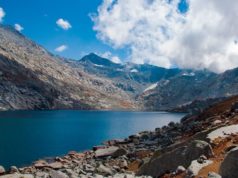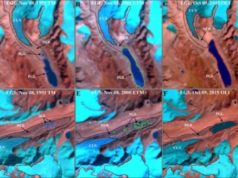Kinnaur — The Kinnaur district administration has identified two high-altitude glacier lakes in Sangla Kanda, including Kashang, at an elevation of 4,300 meters. These lakes, formed due to melting glaciers, pose a significant flood risk to the nearby rivers and streams, especially during the upcoming monsoon season.
DC Kinnaur, Dr. Amit Kumar Sharma, confirmed that these artificial lakes have been detected due to glacier melt in Sangla Kanda and Kashang Kanda. “We have received information about the formation of these lakes. To assess the potential threat and gather accurate data, we are preparing to conduct expeditions through the National Remote Sensing Centre (NRSC) and C-type surveys,” he stated.
The primary objective of these expeditions is to evaluate the structural integrity of the lakes and predict the possible impact on nearby areas if these lakes were to burst. This proactive step is crucial for understanding the potential damage to the regions around the respective rivers and streams.
Dr. Sharma also announced that a state-level mock drill is scheduled for June 14 to prepare for potential disaster scenarios in the Kinnaur district. This drill will include participation from multiple departments, including the Indo-Tibetan Border Police (ITBP), police, and Home Guard personnel. The exercise aims to enhance coordination and readiness among various agencies to effectively handle any potential disasters.
Historically, artificial lakes formed by glacier melting have posed significant threats. In 2000 and 2005, the rupture of an artificial lake in Parchu, Tibet, resulted in catastrophic flooding in the Satluj River. This disaster caused extensive damage across several areas, including Kinnaur, Rampur Bushahr, and Tattapani, leading to numerous casualties and damage to property worth crores of rupees.
Given the potential for similar devastation if the lakes in Sangla Kanda and Kashang were to burst, the Kinnaur administration has initiated early monitoring and precautionary measures. This proactive approach aims to prevent such incidents or minimize the extent of damage.







